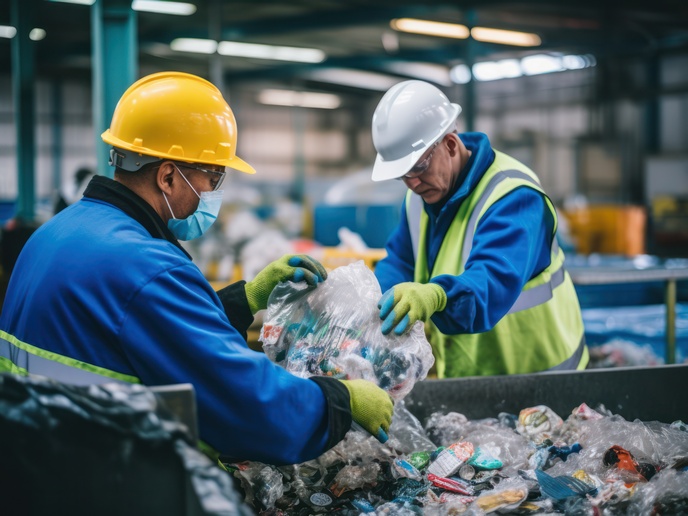Bacteria could hold key to replacing ‘forever chemicals’
The chances are that at some point today, you will make use of a product containing fluorinated materials. A quarter of all pharma drugs for example contain fluorine(opens in new window) in one way or another, while fluorinated polymers(opens in new window) can be found in items ranging from coated cooking pots to water-repellent fabrics. One reason for their usefulness is that fluorinated molecules are very stable – the bond formed between carbon and fluorine atoms is incredibly strong. It is precisely this strength however that makes fluorinated chemicals so difficult to break down and recycle. When multiple fluorine atoms are present in these fluorinated compounds, they are referred to as forever chemicals(opens in new window). “These fluorinated molecules are typically produced with oil-derived petrochemicals,” explains SinFonia(opens in new window) project coordinator Pablo Iván Nikel from the Technical University of Denmark(opens in new window). “This is very environmentally impactful, and waste streams are very difficult to treat.”
Bioengineered bacteria to produce polymers
The question posed by the SinFonia project was whether fluorinated compounds could be manufactured in a more sustainable way, using renewable resources to produce biodegradable compounds with similar properties – thus avoiding ‘forever chemicals’. The project team landed on the idea of bioengineering bacterial cell ‘factories’ to produce polymers, the building blocks of plastic. The first step in this process was to screen and identify enzymes that could connect carbon and fluorine atoms, to create organofluorines. It was discovered that only about 20 enzymes can achieve this – an incredibly small number. The next step was to use these basic fluorinated molecules to gradually create more complex biochemical networks in the cells. Through this process, the project was able to demonstrate that bacteria can be used to produce polymer building blocks.
Same physical properties as conventional materials
The project went one step further however. “We realised that a major share of all fluorinated molecules produced by industry end up in fluorinated plastics,” says Nikel. “We wanted to see if we could produce plastic using living cells, with lower concentrations of fluorine but with the same physical properties as conventional fluorine materials.” Nikel notes that in conventional polymers, carbon atoms are typically saturated with fluorine. The polymers produced by SinFonia’s novel bacteria-based process however, contain far less fluorine. “We were able to show that while our sustainably produced polymers contain a little fluorine, they were able to retain many of the benefits of heavily fluorinated materials,” he notes. “This was one of the most impactful findings of the project.”
Consumers open to sustainable alternatives
Industrial partners within the consortium have been quick to identify the potential market value of these molecules. Since project completion, a spin-off company has been launched, intent on looking into ways of commercialising this innovation. The project has also tested the water in terms of consumer acceptance. Surveys carried out have shown that consumers are largely open to using polymers produced by bacteria, as well as a high level of awareness when it comes to the issue of ‘forever chemicals’. “We are still at the early stages of development,” adds Nikel. “We need to consolidate our results, and of course scale up our technology. It is one thing to show how this works in the lab, but another to cost-efficiently produce large amounts of polymers to replace forever chemicals. We are positive though that the outcomes of the project will lead to the sustainable use and production of fluorinated materials.”







